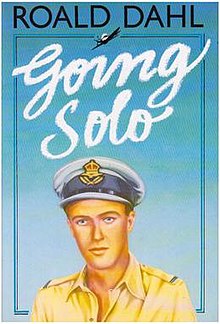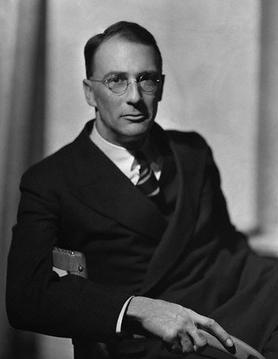
Cecil Louis Troughton Smith, known by his pen name Cecil Scott "C. S." Forester, was an English novelist known for writing tales of naval warfare, such as the 12-book Horatio Hornblower series depicting a Royal Navy officer during the Napoleonic Wars.

Dar es Salaam is the largest city and financial hub of Tanzania. It is also the capital of the Dar es Salaam Region. With a population of over five million people, Dar es Salaam is the largest city in East Africa and the sixth-largest in Africa. Located on the Swahili coast, Dar es Salaam is an important economic center and one of the fastest-growing cities in the world.

Roald Dahl was a British author of popular children's literature and short stories, a poet, screenwriter and a wartime fighter ace. His books have sold more than 300 million copies worldwide. Dahl has been called "one of the greatest storytellers for children of the 20th century".
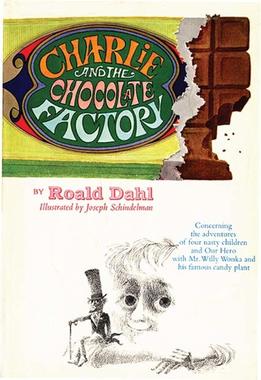
Charlie and the Chocolate Factory is a 1964 children's novel by British author Roald Dahl. The story features the adventures of young Charlie Bucket inside the chocolate factory of eccentric chocolatier Willy Wonka.

The BFG is a 1982 children's novel by British author Roald Dahl. It is an expansion of a short story from Dahl's 1975 novel Danny, the Champion of the World. The book is dedicated to Dahl's past daughter, Olivia, who had died of measles encephalitis at the age of seven in 1962.

A gremlin is a mischievous folkloric creature invented at the beginning of the 20th century to originally explain malfunctions in aircraft, and later in other machinery, processes, and their operators. Depictions of these creatures vary widely. Stories about them and references to them as the causes of especially inexplicable technical and mental problems of pilots were especially popular during and after World War II.
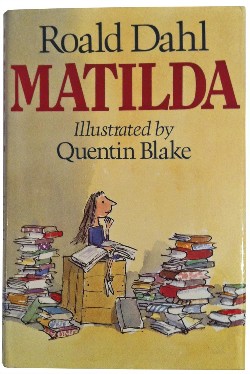
Matilda is a 1988 children's novel by British author Roald Dahl. It was published by Jonathan Cape. The story features Matilda Wormwood, a precocious child with an uncaring mother and father, and her time in school run by the tyrannical headmistress Miss Trunchbull.

Boy: Tales of Childhood (1984) is an autobiography written by British writer Roald Dahl. This book describes his life from early childhood until leaving school, focusing on living conditions in Britain in the 1920s and 1930s, the public school system at the time, and how his childhood experiences led him to writing children's books as a career. It concludes with his first job, working for Royal Dutch Shell. His life story continues in the book Going Solo.
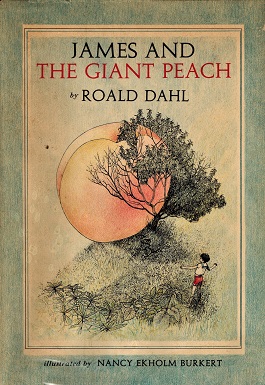
James and the Giant Peach is a popular children's novel written in 1961 by British author Roald Dahl. The first edition, published by Alfred Knopf, featured illustrations by Nancy Ekholm Burkert. There have been re-illustrated versions of it over the years, done by Michael Simeon, Emma Chichester Clark, Lane Smith and Quentin Blake. It was adapted into a film of the same name in 1996 which was directed by Henry Selick, and a musical in 2010.

Roald Dahl short stories bibliography is a comprehensive annotated list of short stories written by Roald Dahl.
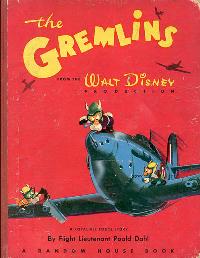
The Gremlins is a children's book written by British author Roald Dahl and published in 1943. In writing the book, Dahl draws on his own experience as a Royal Air Force (RAF) pilot during the Second World War. The story's principal character Gus, an RAF pilot, has his Hawker Hurricane destroyed over the English Channel by a gremlin—mischievous creatures who were part of RAF folklore. As they parachute into the water, Gus convinces the gremlins to join forces against a common enemy; Hitler and the Nazis. It was Dahl's first book and was written for Walt Disney Productions, in anticipation of a feature-length animated film that was never made.

The Adventures of James Bond Junior 003½ is a 1967 James Bond spin-off novel carrying the Glidrose Productions copyright. It was first published in the United Kingdom by the Jonathan Cape publishing company in 1967 and later in 1968 in the United States by Random House. The American edition was retitled 003½: The Adventures of James Bond Junior. The novel was written under the pseudonym R. D. Mascott.

Fifinella was a female gremlin designed by Walt Disney for a proposed film from Roald Dahl's book The Gremlins. During World War II, the Women Airforce Service Pilots (WASP) asked permission to use the image as their official mascot, and the Disney Company granted them the rights.
David Arthur Coke, DFC, was a flight lieutenant in the Royal Air Force Volunteer Reserve during the Second World War, and is credited with two destroyed, two probables, and two damaged aircraft during his service. He is known in popular culture for his friendship with the author Roald Dahl while serving in the Royal Air Force.

Some Time Never: A Fable for Supermen is a 1948 book by Roald Dahl, his first adult novel. Dahl began writing it after editor Maxwell Perkins expressed an interest in publishing a novel length book if Dahl were to write it. The book was met with predominantly poor reception and was considered to be a failure, although it is historically noteworthy as one of the first novels about nuclear war to be published after the atomic bombings of Hiroshima and Nagasaki. The story is a darker take on the same premise as Dahl's first children's novel, The Gremlins.
"The Last Act" is a 1966 short story by Roald Dahl, described by its author as an attempt to write about "murder by fucking." It was first published in the January 1966 issue of Playboy, having been rejected by The New Yorker because of its disturbing content. It was later included in the collection Switch Bitch, published in 1974 by Michael Joseph Ltd.
The Battle of Athens on 20 April 1941 is the name given by author Roald Dahl to a dog-fighting air battle over Athens fought for half an hour between the Royal Air Force and the Luftwaffe towards the end of the Battle of Greece.

Roald Dahl (1916–1990) was a British author and scriptwriter, and "the most popular writer of children's books since Enid Blyton", according to Philip Howard, the literary editor of The Times. He was raised by his Norwegian mother, who took him on annual trips to Norway, where she told him the stories of trolls and witches present in the dark Scandinavian fables. Dahl was influenced by the stories, and returned to many of the themes in his children's books. His mother also nurtured a passion in the young Dahl for reading and literature.
Gipsy House is a house in the village of Great Missenden in the English county of Buckinghamshire. It was the home of the writer Roald Dahl and his family for several decades. The house is situated on Whitefield Lane, an old drovers' road on the outskirts of the village. It is currently privately owned but the writing hut is on display at Roald Dahl Museum and Story Centre.
Olivia Twenty Dahl was the oldest child of the author Roald Dahl and the American actress Patricia Neal. She died at the age of seven from encephalitis caused by measles, before a vaccine against the disease had been developed. Roald Dahl's books James and the Giant Peach (1961) and The BFG (1982) were dedicated to Olivia. As a result of her death, her father Roald became an advocate for vaccination and wrote the pamphlet "Measles: A Dangerous Illness" in 1988.
